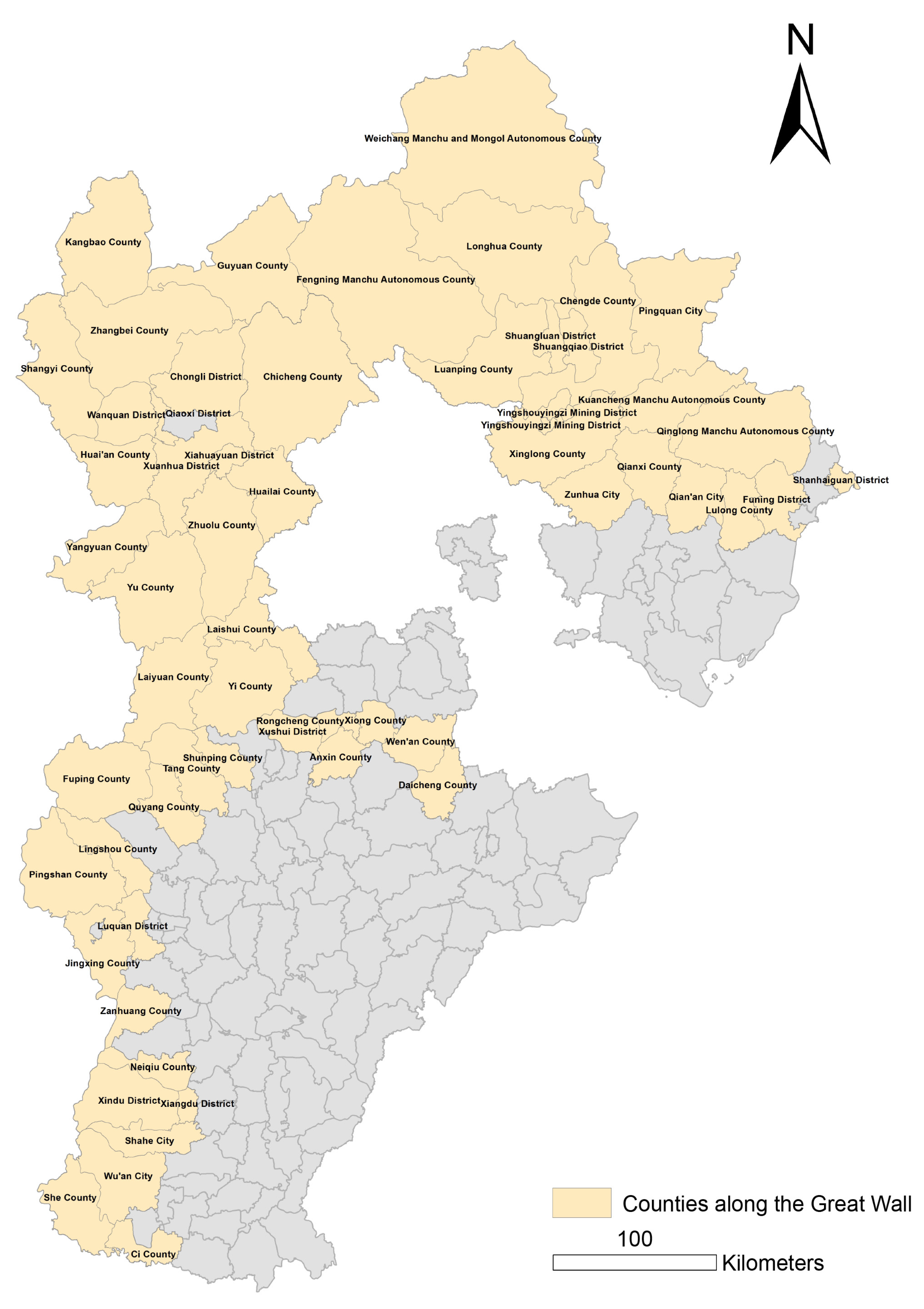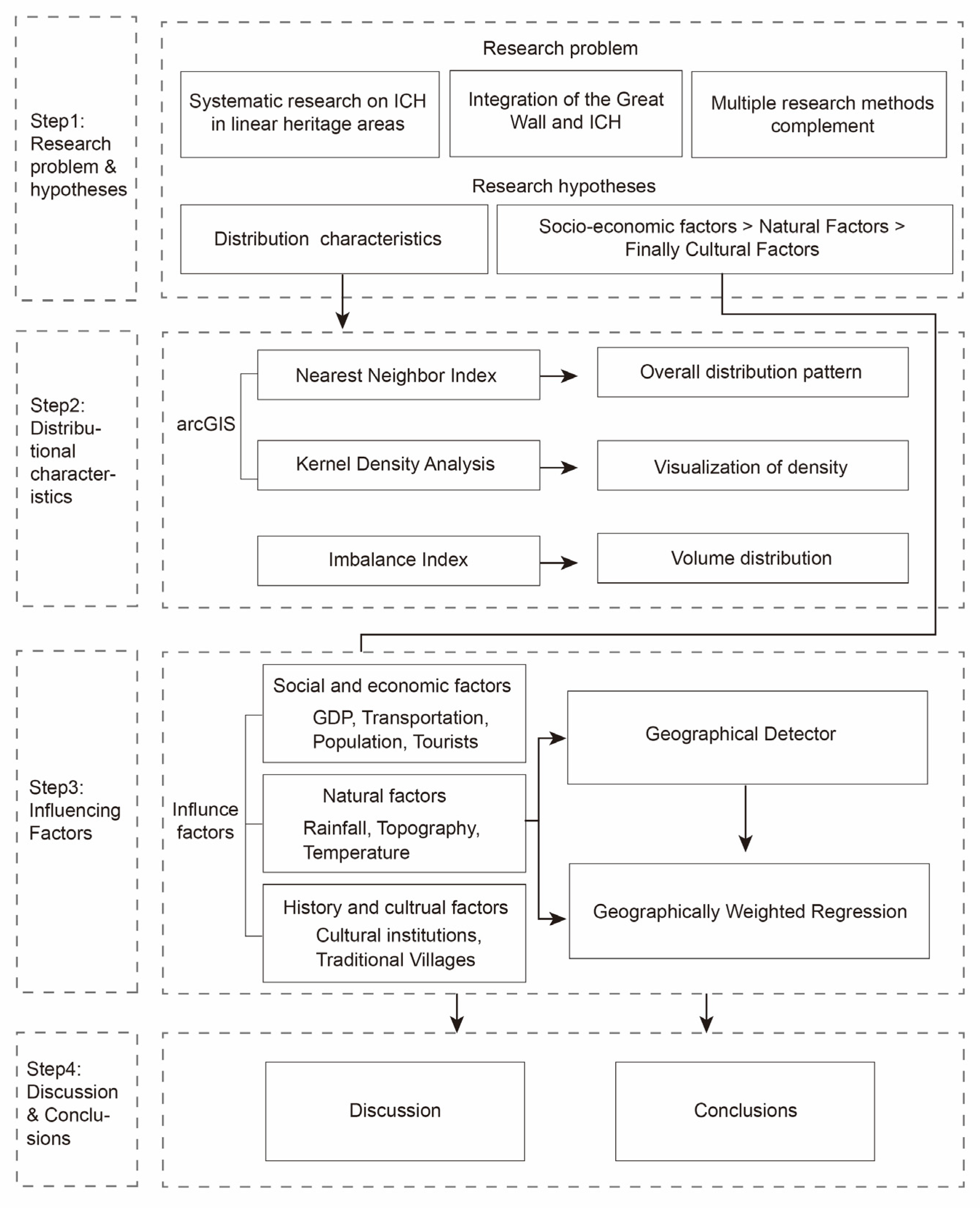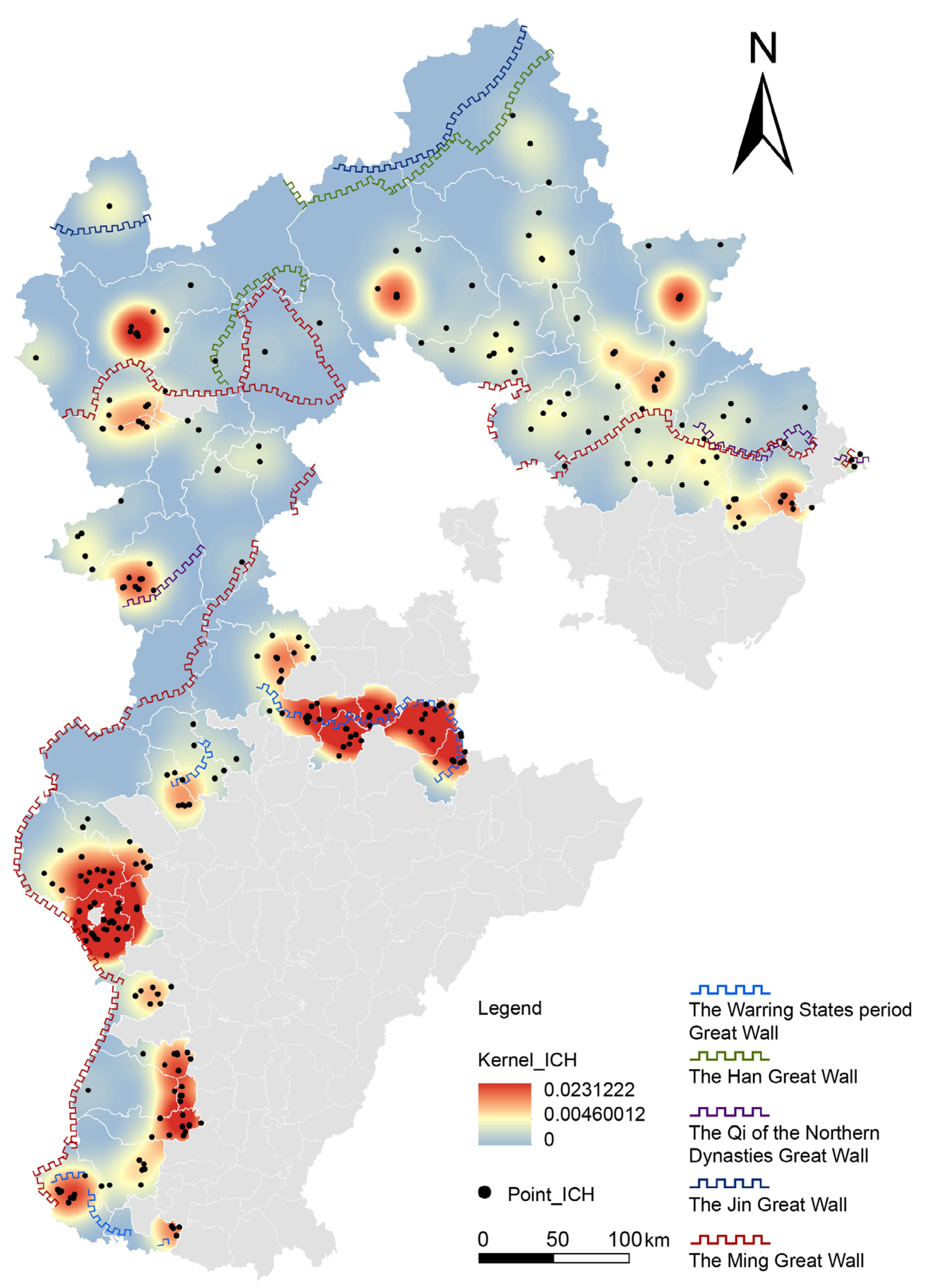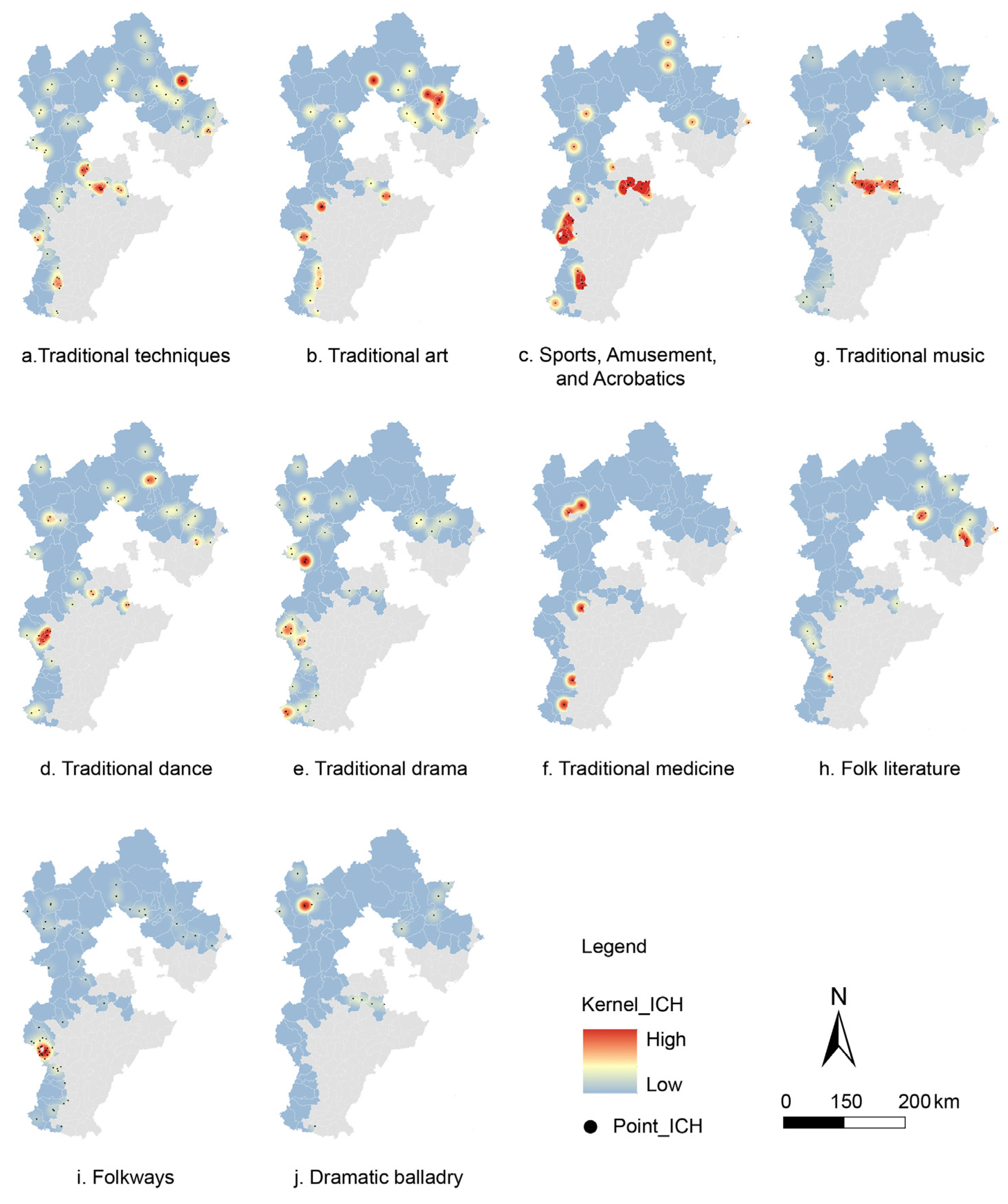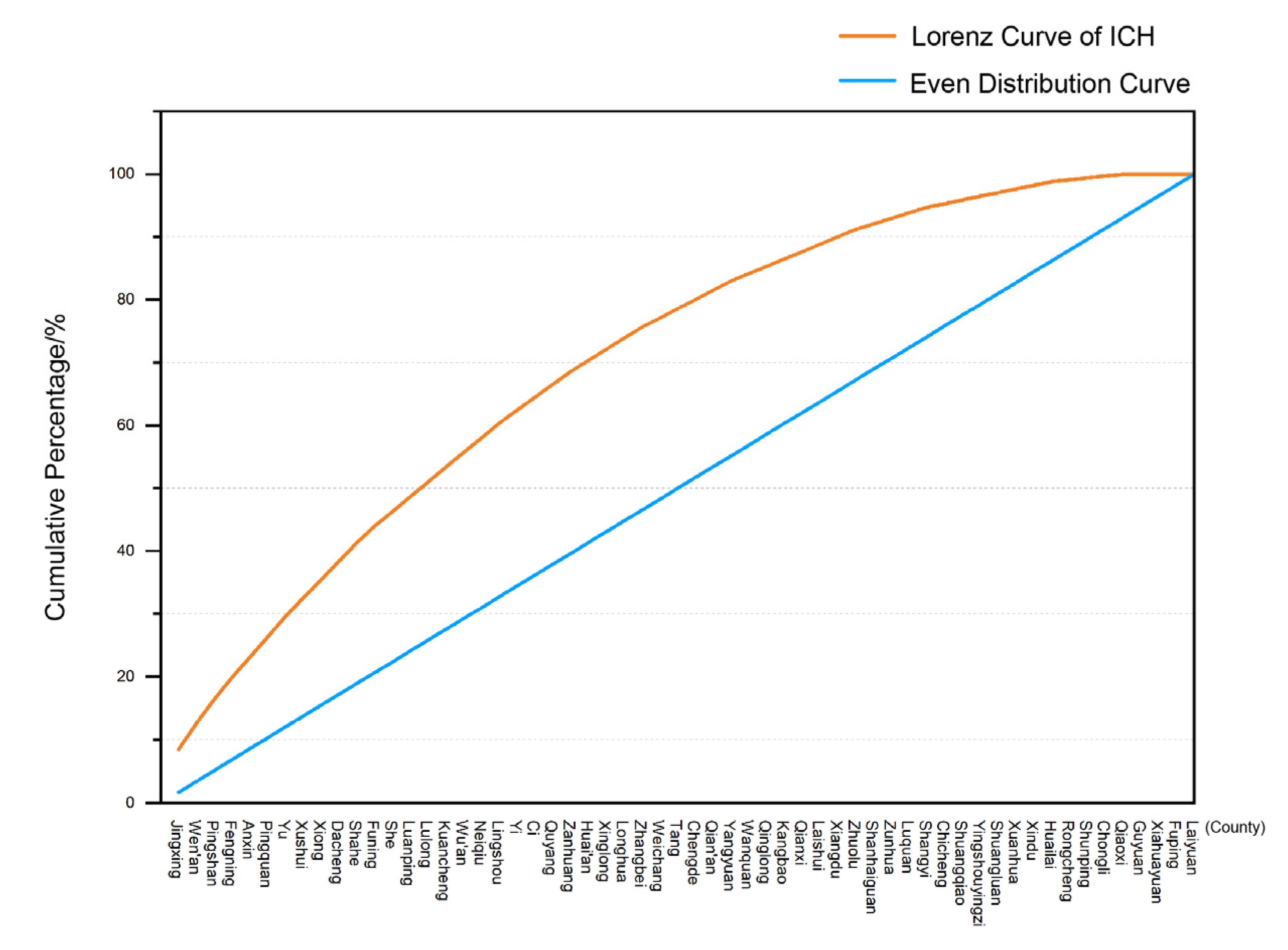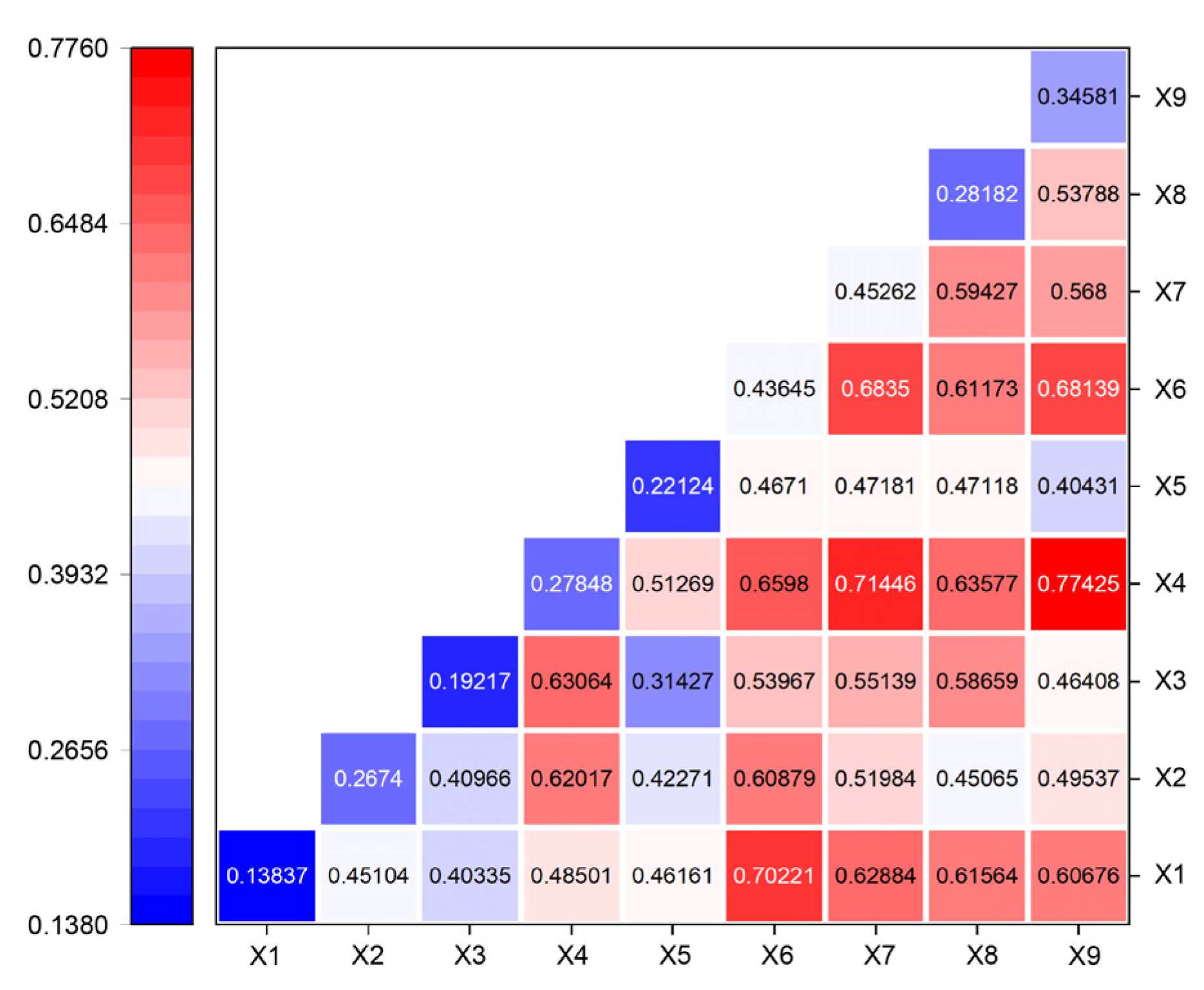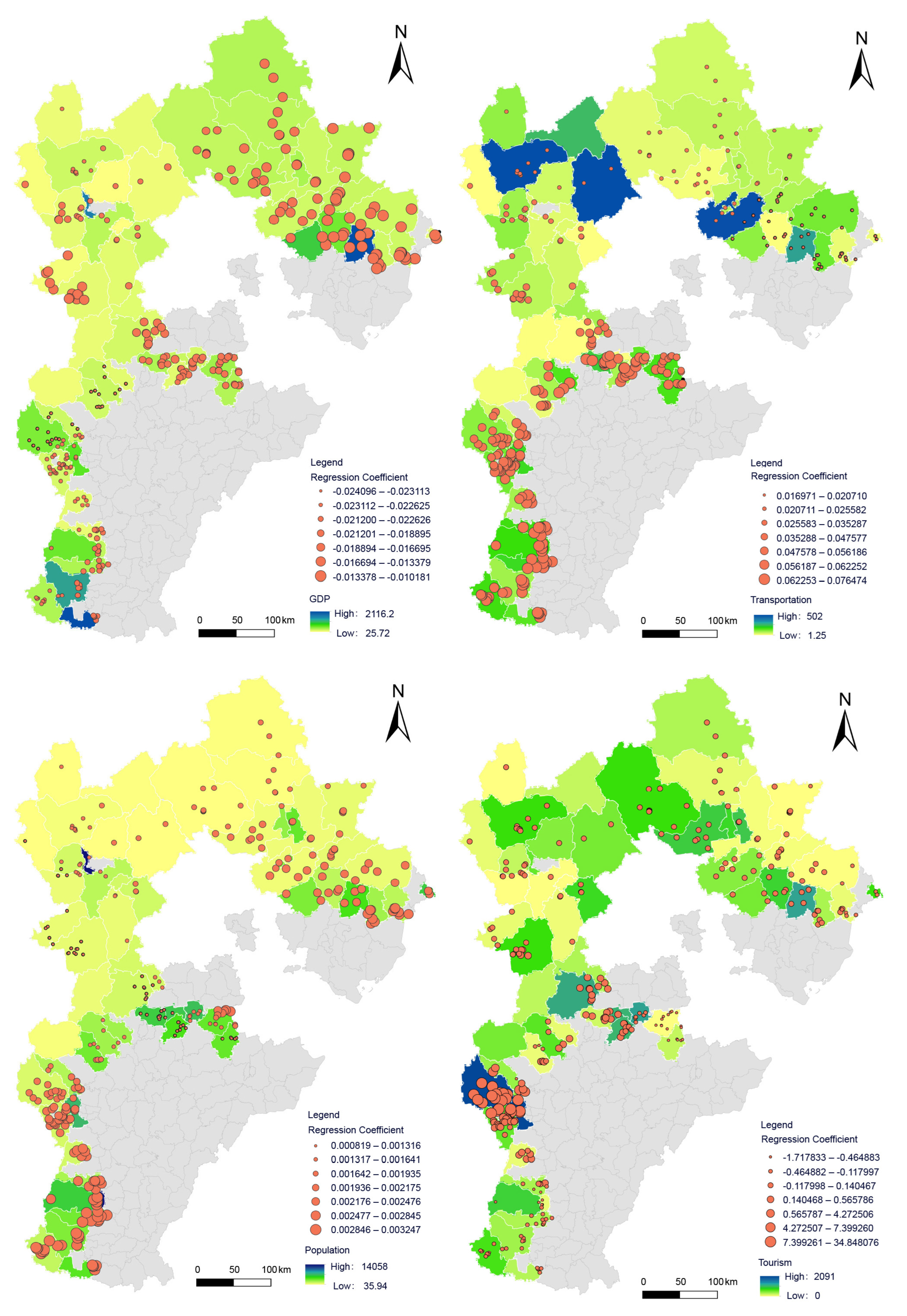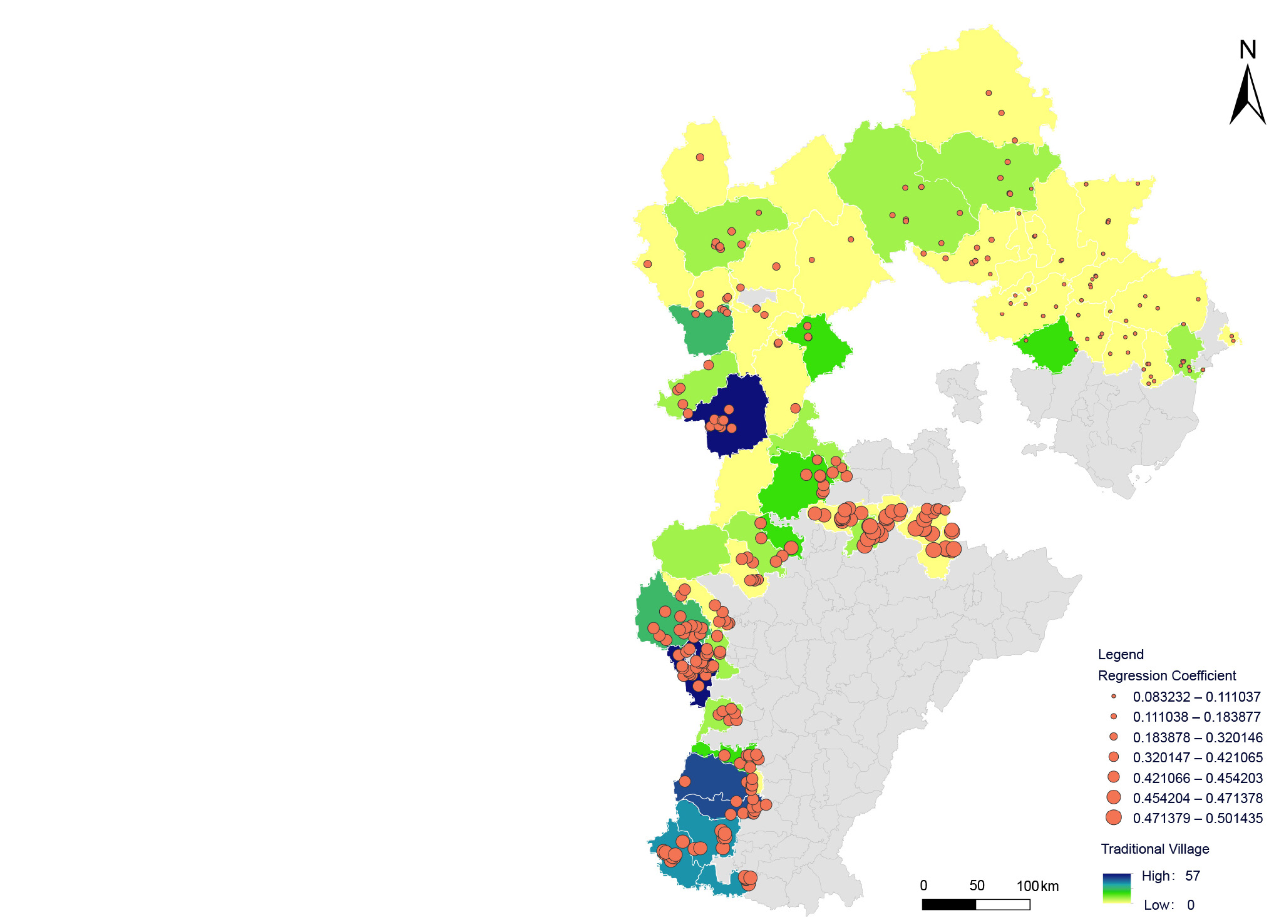As one of the Seven Wonders of the World, the Great Wall represents humanity’s most enduring defensive architecture in scale and construction duration, serving as China’s largest and most extensively distributed linear cultural heritage site. With a history spanning over 2700 years, the Great Wall of China not only fulfilled a vital military defense role but also embodied the evolution of political systems, ethnic relations, and cultural traditions across various historical periods. The widespread remains along the Great Wall—such as passes, beacon towers, fortresses, and postal stations—witness the dynamic processes of ethnic integration and frontier life transformation. As a transregional linear cultural heritage site, the Great Wall played multiple roles in historical migration, military strategy, ethnic exchange, and interaction in agricultural trade. These functions have shaped a unique cultural context that underpins the development of ICH and provides essential spatial and cultural foundations for its geographic distribution [
2].
Recent studies of ICH have focused on the safeguarding systems [
3,
4], management practices [
5], socioeconomic impacts [
6,
7], and digital preservation and innovation ICH [
8,
9,
10]. Research scales range from individual ICH elements [
11] to specific categories [
12] and regional clusters [
13,
14]. ICH studies have progressively evolved into a multidimensional and interdisciplinary field. However, quantitative modeling approaches in this domain remain relatively underdeveloped. Research on the Great Wall primarily focuses on archaeological history, architecture, geography, and cultural dissemination, including its historical evolution and excavation work [
15,
16], the architecture and craftsmanship of the Great Wall sites [
17], the geography of the Great Wall [
18], the preservation and development of the Great Wall [
19,
20,
21], and the study of culture and semiotics [
22] among others. Against the backdrop of actively constructing the Great Wall Cultural Corridor and advancing the Great Wall National Cultural Park in China, research has expanded to areas such as tourism development models and cultural value studies [
23]. Recent studies have increasingly emphasized ICH protection and development along the Great Wall, highlighting the importance of integrating the Great Wall heritage with ICH. Scholars have explored inheritance pathways, innovation strategies, and the integration of cultural tourism [
24]. Notable contributions include Wang’s analysis of ICH types along Eastern Hebei’s Great Wall Cultural Belt and proposed tourism integration strategies [
25] as well as another Wang’s case study on “Da Shuhua” ICH, examining its dissemination challenges and integration along the Great Wall [
26]. Quantitative approaches have also emerged, such as Lin’s spatial distribution analysis of the Ming Great Wall county-level ICH, utilizing the Minimum Cumulative Resistance (MCR) method to assess heritage corridor construction [
27]. Currently, research on ICH along the Great Wall is still relatively weak, mainly focusing on the paths and strategies for heritage transmission and innovation, as well as empirical studies on individual cases of ICH. There is little research on the overall quantitative aspects.
The main objectives of this study are as follows: (1) to reveal the spatial distribution patterns of ICH along the Great Wall in Hebei Province; (2) to quantitatively assess the explanatory power of natural, economic, and cultural factors on ICH distribution, identify the dominant drivers and their interactions, and uncover the spatial heterogeneity of their impacts across different geographic regions, thereby clarifying the coupled multi-factor driving mechanisms underlying ICH distribution; (3) based on the spatial patterns of ICH and its influencing factors, to propose protection strategies for the Great Wall cultural corridor and explore spatial integration and activation pathways for ICH oriented toward sustainable development, thus providing a basis for the overall conservation and coordinated governance of the Great Wall cultural heritage belt.
Literature Review
Due to its intangible characteristics, ICH is more fragile than tangible cultural heritage. As early as 2001, UNESCO recognized the model of combining ICH with physical space, designating Dejima Square as a “Masterpiece of the Oral and ICH of Humanity.” Many scholars realized the importance of tangible entities in the protection of ICH and began to deepen the research on the interaction between ICH and geographical environments [
28]. For instance, Liu argues that ICH is the result of human interaction with the material world in daily life, with different geographical and social environments giving rise to unique ICH characteristics [
29]. Influenced by environmental factors, ICH possesses regional and communal characteristics; therefore, a geographical indication protection model should be established to enhance public awareness and brand effect [
30,
31]. Falcade, through empirical research on French wine-making techniques, argues that ICH skills can be supported by industry and tourism, fostering their collaborative development and creating a unique geographical indication [
32]. At this stage, both theoretical and empirical research found that the protection of ICH shifted from the heritage itself to the concept of cultural ecological protection, combining ICH with natural environments and tangible cultural heritage for integrated preservation.
Along with the transformation of conservation concepts, research on the geographical environment of ICH has gradually shifted to spatial quantitative analysis, combining the protection and transmission of ICH with geography. This approach explores the spatiotemporal distribution and driving factors of ICH, offering support for protection and development strategies at the regional level. The influencing factors of ICH exhibit regional, typological, and temporal differences, which give rise to different dissemination models, pathways, and protection measures. In terms of study area, the current study includes different scopes such as national [
33,
34], provincial [
35], multi-provincial [
36,
37], and specific regions. At present, there is limited research on ICH within the broader system of linear heritage areas, and the strong correlations and interactions have not been thoroughly examined. The combination of linear cultural heritage and ICH along the route is more beneficial for the protection and continuation of ICH.
Research on the spatial distribution of ICH has seen continuous methodological advancement, evolving from early static mapping to spatial modeling and multi-factor driving mechanism analysis. In terms of spatial pattern identification, GIS techniques have been widely applied for ICH visualization and spatial structure analysis. Cheng et al. utilized the nearest neighbor index to detect the overall distribution patterns of ICH and employed kernel density estimation to generate heat maps for visualizing clustering areas [
38]. However, both methods have clear limitations: the nearest neighbor index only reflects overall clustering without identifying multi-scale or regional variations; kernel density estimation does not account for area differences among regions, potentially leading to biased interpretations, and it lacks a built-in mechanism for statistical significance testing. Subsequent studies introduced spatial autocorrelation analysis to examine regional spatial relationships of ICH [
39]. Nevertheless, spatial autocorrelation itself does not infer causality and must be integrated with other models to identify underlying driving mechanisms. In terms of factor identification and driving mechanism analysis, existing studies can be broadly divided into two methodological approaches. The first approach involves the spatial proximity of influencing factors through spatial overlay and buffer zone analysis. For example, Zhang used buffer zone comparisons to examine differences in ICH quantity [
40], while Liu employed location entropy to measure the clustering intensity of various ICH types [
41]. However, such methods are often limited to single-factor analyses, lack consideration of interaction effects and statistical significance, and exhibit limited robustness. The second approach tends to adopt the Geodetector model to assess the influence of multiple natural, socioeconomic, and cultural variables on ICH spatial distribution. The Geodetector model is capable of identifying the explanatory power of each factor as well as pairwise interactions, without requiring linear assumptions, and is applicable to both categorical and continuous variables [
42]. Nonetheless, this method cannot capture spatial heterogeneity in factor influence—specifically, it cannot determine whether a factor exerts uniform effects across different regions.
Previous studies have pointed out that the overall spatial pattern of ICH in China typically exhibits a “clustered distribution with core hotspots” [
38], a feature that is particularly evident along linear heritage corridors such as the Ming Great Wall [
27] and the Yellow River [
39]. The distribution of ICH is influenced by multiple factors, including natural, social, and cultural elements, among which socioeconomic variables generally demonstrate stronger explanatory power. Studies on the spatial distribution of ICH in the Beijing–Tianjin–Hebei region—which partially overlaps with the current study area—also indicate that socioeconomic factors are the dominant drivers [
37]. County-level studies on ICH spatial distribution have shown that tangible cultural heritage is closely linked with ICH resources and that the natural environment is the most significant cultural–ecological factor aside from tangible heritage [
43].
Based on the above, two hypotheses are proposed:
H1. The distribution of ICH along the Great Wall in Hebei Province follows a clustering pattern.
H2. Socioeconomic factors have the greatest influence on the distribution of ICH along the Great Wall in Hebei Province, followed by cultural factors and, finally, by natural factors.
Overall, existing research on the spatial distribution of ICH lacks sufficient explanatory power for underlying mechanisms and fails to provide a systematic integration of spatial patterns with their driving forces. To address these limitations and test the proposed hypotheses, this study focuses on provincial-level and above ICH items within 58 county-level regions along the Great Wall in Hebei Province. A three-stage analytical framework is proposed, consisting of: spatial clustering identification, driving mechanism detection, and spatial heterogeneity modeling. This hierarchical and complementary structure aims to comprehensively reveal the spatial pattern and influencing mechanisms of ICH along the Great Wall in Hebei. The nearest neighbor index analysis is applied to detect the overall spatial distribution pattern of ICH points and to preliminarily assess clustering trends. Kernel density estimation is used to identify core clusters of ICH resources in a geographic space, providing a visual complement to spatial density patterns. The imbalance index and the Lorenz curve are employed to quantify the degree of resource concentration across different counties. The Geodetector model is applied to analyze the driving mechanisms behind ICH spatial distribution, identifying key influencing factors and capturing their interactive and synergistic effects. A Geographically Weighted Regression (GWR) model is introduced to examine the spatial heterogeneity of the driving factors’ local influences. The integration of the Geodetector and the GWR models enables both the identification of overall explanatory power and the mapping of spatial heterogeneity, achieving a coherent combination of causal inference and mechanism modeling.
